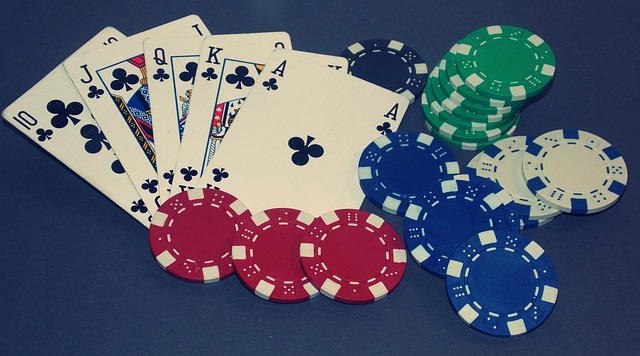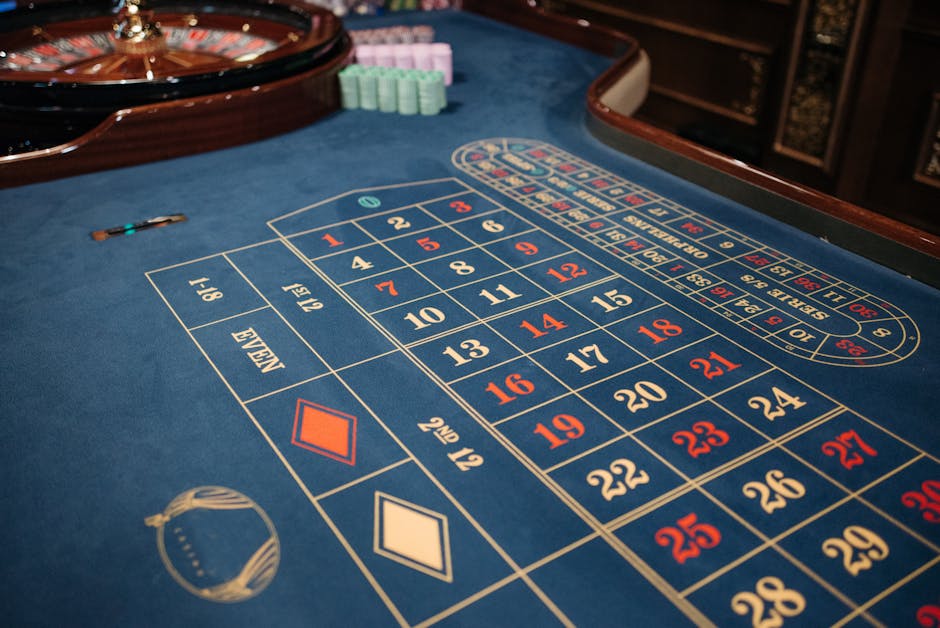Introduction: Playing Smarter, Not Just More
Online poker isn’t a scratch card with fancier graphics. It’s a game of decisions, math, timing—and yes, psychology. Sure, luck plays a role in the short term. Everyone gets a hot run once in a while. But over time, it’s skill and discipline that sort players into two camps: those who just reload the bankroll, and those who steadily grow it.
The difference? Strategy. Casual players who sit down with even a basic framework—knowing position, bankroll limits, and when to fold—start making fewer costly mistakes. Add a consistent practice routine, some hand history reviews, and a focus on spotting patterns, and they’re already ahead of most of the field.
Winning at online poker long-term isn’t about flashy plays or genius bluffs. It’s about stacking small edges consistently. You don’t need to know everything—you just need to stop doing what clearly doesn’t work. If you treat the game like a craft and not a lottery, results follow.
Know the Basics—Inside and Out
Even in the fast-paced world of online poker, skipping over the basics is one of the most common mistakes casual players make. To play smarter, you need to build on a strong foundation.
Master Hand Rankings
Before you start making strategic moves, you need to know what you’re working with. Hand rankings form the core of every decision.
- Know what beats what — from high card to royal flush
- Memorize the ranking order so decisions can be made instinctively
- Don’t overvalue weak or medium hands in early stages
Understand Table Positioning
Where you sit at the virtual table matters more than many realize. Your position affects the power and profitability of your plays.
- Early position (first to act): play tighter, more conservative
- Middle position: expands your hand range slightly depending on table flow
- Late position (closer to dealer): ideal for broader hand selection and aggressive moves
Learn the Betting Rounds
Knowing when to bet, raise, call, or fold is where real money is won or lost. Each betting round—pre-flop, flop, turn, and river—requires a calculated approach.
Key tips for betting strategy include:
- Pre-flop: Be selective; play strong hands aggressively
- Flop: Reassess your holding—has your hand improved?
- Turn and River: Manage pot odds and watch for opponent behavior shifts
Fundamentals Separate Winners from Hopefuls
There’s a reason experienced players focus on fundamentals: they’re what consistently keep you in the game. They provide:
- A structure for decision-making under pressure
- A defense against tilt and reckless play
- A framework to absorb advanced strategy more efficiently
Before chasing complex tactics, master the core principles. The basics aren’t just a starting point—they’re the difference between guessing and playing with purpose.
Leverage Table Selection
Not every poker table is worth your time—or your bankroll. One of the sharpest moves a player can make is to step back before sitting down. Table selection isn’t just about finding a game; it’s about finding the right one.
Soft games are where the edge lies. You’re looking for tables with tourists, not grinders. Think loose calls, weird bet sizes, and chat filled with confusion or bravado. If players are limping a lot pre-flop or calling down with weak hands, you’ve probably found a soft spot. These tables turn marginal hands into winners and good strategies into profit.
On the other hand, avoid tables that feel like a final table at a major—tight ranges, frequent 3-bets, and no chat distraction. If everyone’s playing serious, you’re fighting uphill.
Online tools can help filter smartly. Use tracking software (where legal) to tag players based on past behavior. Many sites let you see VPIP (Voluntarily Put In Pot) stats over time. Higher VPIP usually means looser, weaker play. Look also for average pot size and players per flop. Bigger pots and more flops seen? Probably a softer table.
The takeaway: time spent finding the right game often pays more than the first few orbits played. Don’t just log in—hunt first, play second.
Bankroll Management: Your Hidden Edge
If you’re not managing your bankroll, you’re not playing poker—you’re gambling. Playing within your budget isn’t optional; it’s survival. Going all-in too often, playing stakes that stretch your limits, or trying to chase losses is how players go broke fast. The smartest grinders aren’t just good at the game—they’re disciplined with their money.
Your bankroll is your weapon. If you burn through it, you’re out of the game. That means setting limits. Most pros suggest having at least 20–30 full buy-ins for the stakes you’re playing. Conservative players go higher. This isn’t caution—it’s control. It keeps you in the game through variance and bad runs.
Building your stake is about growth, not risk. Start small. Move up when your bankroll allows it—not just because you’re feeling confident. Use winnings to level up, not rent money. Set stop-loss limits and stick to them. There’s no glory in being the hero who tanks their roll on one table.
Risk of ruin is real. It’s basically your odds of losing your entire bankroll due to variance—even if you’re playing well. The higher you push your limits, the more you put your roll in danger. Proper bankroll management brings that risk close to zero. It doesn’t guarantee wins, but it guarantees survival.
Discipline here isn’t glamorous, but it’s what lets you keep showing up. And showing up is how you win long-term.
Bluff Less. Think More.
A bluff isn’t magic—it’s a move with a purpose. Good bluffs tell a believable story and make sense within the hand. Reckless ones usually do the opposite: they happen without setup, without observation, and they burn chips fast.
Smart bluffing starts before the hand is even dealt. You watch how players bet, how fast they act, what hands they showdown. You look for patterns—who continuation bets too often, who folds to pressure, who plays scared on the river. The timing of the bluff matters too. Bluff into weakness, not strength. Bluff when the story lines up, not when you’re just frustrated or bored.
This is why tight-aggressive play usually outclasses the wild and loose. A tight-aggressive player builds credibility—they fold a lot, but when they bet hard, it means something. That makes their bluffs more believable. Loose and wild players, on the other hand, are often easy to read and isolate. It feels exciting, sure, but most of them bleed chips over time.
In short: choose your moments. Bluff with a plan. And remember that in poker, folding is the move that gets you to the next hand—bluffing is the one that should win you the pot right now.
Use Tracking Software (Legally)
Staying competitive in online poker often means using every (legal) edge available—and tracking software is one of the most important tools in a serious player’s arsenal.
What Can Tracking Software Show You?
Tracking tools like PokerTracker, Hold’em Manager, and DriveHUD provide deep statistical insights by analyzing thousands of hands. These tools help you learn your tendencies—and those of your opponents.
Key Data Points Offered by Poker HUDs:
- VPIP (Voluntarily Put Money in Pot): Helps identify loose vs. tight players
- PFR (Pre-Flop Raise %): Reveals aggression levels
- 3-bet frequency: Spot hyper-aggressive plays early
- Fold to C-bet: Gauge post-flop tendencies
- Win Rate (BB/100): Measure how profitable you actually are
Used wisely, this data turns educated guesses into sharper, more informed decisions.
Know What Tools Are Legal—and What’s Banned
Not all poker tracking software is allowed on every platform. Top poker sites typically publish lists of acceptable third-party tools. Ignoring these guidelines can get your account flagged or even banned.
What’s Usually Allowed:
- Simple tracking/HUD software (PokerTracker, Hold’em Manager)
- Tools for reviewing hand histories post-session
- Equity calculators (used off-table)
What’s Often Banned:
- Real-time assistance tools
- Solver-based decision-makers used during play
- Scripts for seating, pre-flop auto-folds, or auto-betting
Always check a site’s Terms of Service before integrating any tool.
Using Data to Improve Over Time
Tracking software isn’t just for in-game edges—it’s a critical post-session study tool. Reviewing past hands, noting recurring leaks, and analyzing patterns over time helps refine your decision-making process.
How to Use It Effectively:
- Identify consistent losses in specific positions (e.g., small blind)
- Filter hands where you bluff or chase draws—see if you’re profitable
- Study win rates by table type and timing to optimize session planning
By translating raw numbers into strategy adjustments, you play smarter each session—and edge closer to being a long-term winner.
Avoid Distractions
Poker is a mental game, and distractions are silent killers. Phone buzzing? TV humming in the background? Five tabs open? All of it chips away at your focus and drains the quality of your decision-making—often without you even noticing. One hesitation, one misclick, one rushed river bet, and there goes a hard-earned chip stack.
Staying locked in can feel demanding, but it pays. The clearer your head, the better your reads and timing. That edge accumulates over time—translating directly to earnings. Focused players spot patterns faster, exploit weaknesses cleaner, and know when to fold without second-guessing.
It’s not about grinding sixteen hours straight. Short, high-focus sessions beat long marathons more often than not. Mental fatigue leads to leaks. So set a timer, clear the clutter, and treat each session like a sprint, not a slog. The sharper you are, the stronger your edge.
Brush Up on Tournament Strategy
Tournament play isn’t cash game poker. The dynamics shift fast, and how you adapt to those shifts makes or breaks your run. Early on, when blinds are low and stacks are deep, you’ve got room to play a wider range and build reads. Aggression works here—but pick your spots. Loose action without context burns chips you can’t get back.
As your stack shrinks compared to rising blinds, tighten up or go bold—there’s middle ground, but it’s thin. Stack size has to drive your choices. If you’ve got 12 big blinds, you’re not floating flops or making fancy bluffs. You’re shoving or folding. Players who hang on to “standard strategy” instead of adapting get run over by short stacks who know push-fold math [and use it].
Then there’s the bubble. This is where fear creeps in—almost in the money, nobody wants to bust now. It’s the perfect time to steal. While others sit tight, waiting for someone else to fall, you can exploit with well-timed aggression. But if you’re short-stacked yourself, survival is the play. Know your edge, know your spot.
Once the field thins out, ranges expand. People chase bigger pots. You’ll see more action, more bluffs, more mistakes. This is flip-a-switch territory. If you’ve been tight and quiet, now’s where you shift gears—open more pots, re-raise light, make pressure plays. The goal at this point? Don’t just survive. Start stacking.
Tournament poker punishes the unprepared. Stack size, blinds, player behavior—all of it matters. Stay aware. Adjust constantly. That’s how you move from participant to final-table threat.
Learn from Losses
Bad beats are part of poker. The key isn’t avoiding them—it’s extracting value from the pain. Every time the river drowns your top pair or a loose call catches fire, there’s a choice: tilt or analyze. The second option pays better.
Start by reviewing hand histories after each session. Focus on spots where you felt uncertain, or where the result stung. Was your range too wide pre-flop? Did you miss board texture on the turn? Tightening up comes from spotting these patterns—not just chalking losses up to bad luck.
Real growth kicks in post-session, not during play. That’s when emotions cool and patterns emerge. The top players build feedback loops: review, adjust ranges, revisit betting logic, repeat. It’s not about being perfect in the moment. It’s about being sharper tomorrow because of what you learned today.
Next Level: Mix Up Your Games
If you’re only grinding one format, you’re leaving edges on the table. Playing Zoom, Sit & Go, and Omaha isn’t just about variety—it’s about leveling up pattern recognition and decision-making under different pressures. Zoom moves fast and forces tight reads. Sit & Go sharpens your short-stack skills and late-stage survival instincts. Omaha? It teaches you not to fall in love with single strong hands—range reading becomes second nature.
Switching formats does something subtle but important: it breaks habit. You adapt faster, recalibrate quicker, and notice player tendencies with more precision when you’re not locked in autopilot. Poker’s a dynamic game. Sticking to one lane can dull your edges. By learning how different versions unfold, you build mental flexibility—the kind that gives you an edge when the meta shifts or your usual game dries up.
Adaptation isn’t optional—it’s the baseline for long-term success. The broader your foundation, the more tools you’ve got when the real tests come.
Bonus Tip: Understand Human Nature
In online poker, the cards matter—but the tilt matters more. Tilt is what happens when emotion hijacks logic. You lose a hand you shouldn’t have, and suddenly you’re chasing losses, misplaying solid hands, and digging a deeper hole. The sharpest players know how to control their own tilt—and spot it in others.
Your edge starts with discipline. Fold when you’re mad. Pause when you’re anxious. Recognize when you’re not thinking clearly and step away before you bleed chips. It’s not glamorous, but it’s how winners avoid spiraling.
Even better? Catch tilt in your opponents. Some players go off the rails after a bad beat. Look for sudden overbets, weird aggression, overly loose plays. That’s your window. Stay tight, play your range solidly, and let them torch their stack while you stay cool.
Finally, behavioral tells exist even online. Betting patterns, timing gaps, chat box outbursts—these are the digital version of a twitchy eye or sweaty hands. Keep notes. Build profiles. Emotional control isn’t just a defense—it’s an attack strategy, too.
Related Resource Worth Checking Out
Poker and slots might seem like worlds apart—one’s built on skill and psychology, the other’s known for luck and lights. But look closer, and some crossover strategies become clear. For example, bankroll management is just as critical in both arenas. Whether you’re grinding low-stakes poker tables or spinning digital reels, pushing your budget too far leads to the same result: game over.
Pattern recognition is another common thread. In poker, it’s about reading players and hands. In slots, it’s understanding return-to-player (RTP) rates, volatility, and which games offer stronger odds over time. Smart players in both cases know when to act, when to pull back, and how long to stick with a strategy before switching it up.
The article Effective Strategies for Winning at Online Slots digs into these ideas. If you’re serious about poker, there’s value in studying how other games structure odds and what that teaches about calculated risk. It’s not about chasing luck—it’s about maximizing every edge you can find.
Final Thought: The Edge Is in the Details
At the end of the day, there’s no shortcut. No hack. Winning at online poker isn’t about streaks or secret moves—it’s about doing the work, one hand at a time. Small decisions, stacked consistently, win over flashy plays and gut feelings.
The edge goes to players who stay patient and think clearly. In poker, impulse gets punished. Grinding smart, keeping a long-term mindset, and adjusting continually—that’s the real skill set.
Keep watching your own game. Keep learning from better players. Stay focused on what works. The moment you think you’ve figured it all out is when your edge starts to dull. Stay sharp. Stay humble. That’s how you last—and win.



